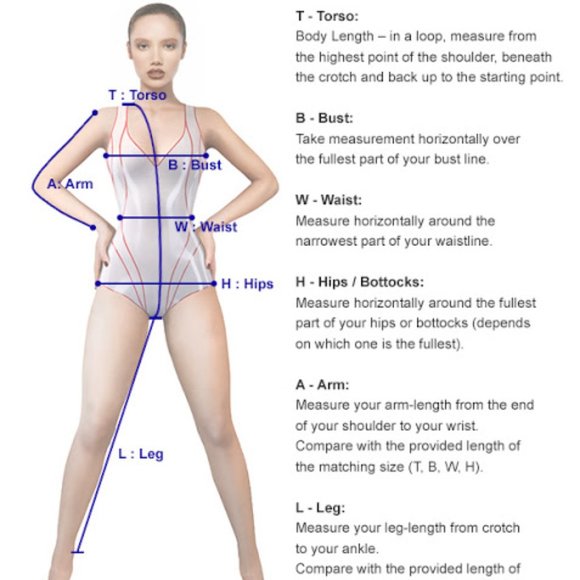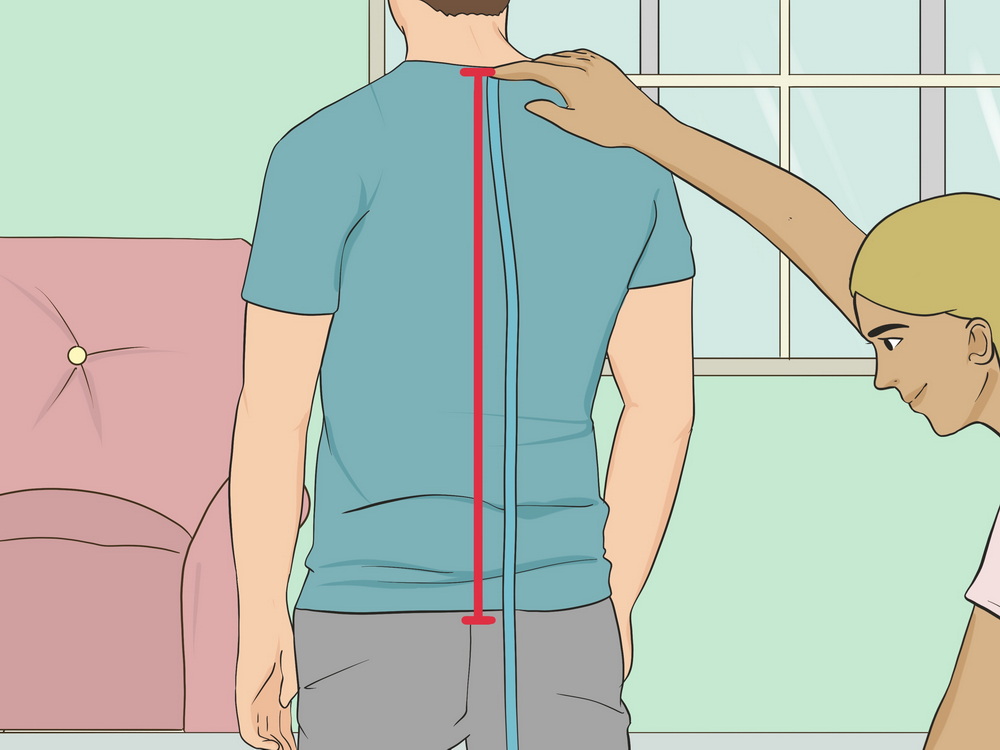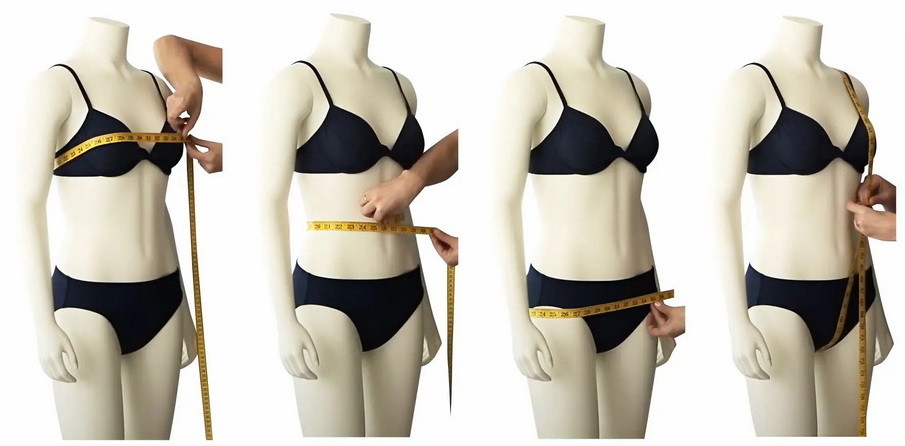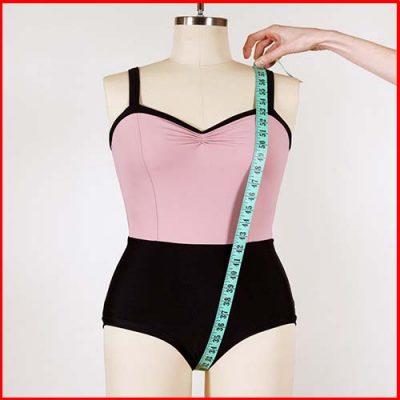Content Menu
● Why Torso Length Matters
● Step-by-Step Guide to Measuring Torso Length
>> Step 1: Prepare for Measurement
>> Step 2: Locate the Starting Point
>> Step 3: Measure Down to Your Natural Waist
>> Step 4: Continue to Your Desired End Point
>> Step 5: Record the Measurement
● Alternative Measurement Method: The Torso Loop
● Tips for Accurate Measurements
● Using Your Torso Length Measurement
● Additional Measurements for the Perfect Fit
● Choosing the Right Swimsuit Style
● Caring for Your Swimsuit
● Conclusion
When it comes to finding the perfect swimsuit, one of the most crucial factors to consider is the torso length. A well-fitted swimsuit not only enhances your appearance but also ensures comfort and confidence while you're enjoying your time in the water. Whether you're shopping for a one-piece swimsuit, a tankini, or even a bikini, understanding how to measure your torso length accurately is essential for achieving the best fit. In this comprehensive guide, we'll walk you through the process of measuring your torso length for a swimsuit, provide tips for getting the most accurate measurements, and offer advice on how to use this information when selecting your next swimwear.
Why Torso Length Matters
Before we dive into the measurement process, it's important to understand why torso length is so crucial when it comes to swimwear. The torso length affects how a swimsuit fits your body from top to bottom. If the torso length is too short, you may experience uncomfortable pulling or riding up, which can lead to constant adjustments and potential wardrobe malfunctions. On the other hand, if the torso length is too long, you might end up with excess fabric that bunches or sags, creating an unflattering appearance and potentially impeding your movement in the water.
For one-piece swimsuits and tankinis, the torso length is particularly critical. These styles need to fit snugly from the shoulders to the hips, accommodating your unique body shape and proportions. Even for bikinis, understanding your torso length can help you choose tops and bottoms that sit at the most flattering points on your body.

Step-by-Step Guide to Measuring Torso Length
Now that we understand the importance of torso length, let's go through the steps to measure it accurately. You'll need a flexible measuring tape, a mirror, and possibly a friend to help you get the most precise measurements.
Step 1: Prepare for Measurement
Start by wearing form-fitting clothing or just your undergarments. This will ensure that you get the most accurate measurements possible. Stand up straight with your feet together and your shoulders relaxed. It's best to measure in front of a full-length mirror so you can see what you're doing and ensure the measuring tape is positioned correctly.
Step 2: Locate the Starting Point
Find the base of your neck, where it meets your shoulders. This point is typically at the center of your collarbone, right at the bottom of your neck. This will be your starting point for the measurement.
Step 3: Measure Down to Your Natural Waist
Run the measuring tape from the base of your neck, down the center of your torso, to your natural waist. Your natural waist is typically the narrowest part of your midsection, usually located about an inch above your belly button. Make sure the tape measure is straight and not twisted or angled.
Step 4: Continue to Your Desired End Point
For a full torso measurement, continue running the tape measure down from your natural waist to where you want the bottom of your swimsuit to sit. This could be at the top of your hip bones for a standard one-piece, or lower if you prefer more coverage. For bikinis or high-cut suits, you might stop the measurement at your hip bones.
Step 5: Record the Measurement
Once you've determined your end point, take note of the measurement on the tape. This is your torso length. It's a good idea to measure a few times to ensure consistency and accuracy.
Alternative Measurement Method: The Torso Loop
Another popular method for measuring torso length, especially for swimsuits, is the "torso loop" technique. This method provides a comprehensive measurement that takes into account the full length of your torso, including the distance between your legs. Here's how to do it:
1. Start at Your Shoulder: Place the end of the measuring tape at the top of one shoulder, where a swimsuit strap would typically sit.
2. Down the Front: Run the tape measure down the front of your body, passing over your bust and stomach.
3. Through the Legs: Continue the tape measure between your legs, making sure it's snug but not too tight.
4. Up the Back: Bring the tape measure up your back, following your spine.
5. Back to the Starting Point: Complete the loop by bringing the tape measure back to the starting point on your shoulder.
6. Record the Measurement: The total length of this loop is your torso measurement for swimwear purposes.
This method is particularly useful for one-piece swimsuits and bodysuits, as it accounts for the full length the garment needs to cover.

Tips for Accurate Measurements
To ensure you get the most accurate torso length measurement, keep these tips in mind:
1. Use a Flexible Tape Measure: A soft, flexible tape measure will contour to your body's curves better than a rigid ruler or yardstick.
2. Keep the Tape Straight: Ensure the measuring tape doesn't twist or angle as you measure. It should follow a straight line down your body.
3. Don't Pull Too Tight: The tape measure should lie flat against your skin but shouldn't be pulled so tight that it compresses your body.
4. Measure Multiple Times: Take the measurement at least twice to ensure consistency. If you get different results, take an average or measure a third time.
5. Get Help if Needed: Having a friend or family member assist you can lead to more accurate measurements, especially for the torso loop method.
6. Wear Minimal Clothing: Measure over bare skin or very thin, form-fitting clothing to avoid adding extra bulk to your measurements.
7. Stand Naturally: Maintain good posture but don't exaggerate it. Stand as you normally would to get the most accurate representation of your body.
Using Your Torso Length Measurement
Once you have your torso length measurement, you can use this information to shop for swimwear more effectively. Here's how to apply your measurements:
1. Check Size Charts: Many swimwear brands provide size charts that include torso length. Compare your measurement to these charts to find the best size for you.
2. Consider Your Body Type: Your torso length in relation to your overall height can help determine your body type (short torso, long torso, or proportional). This information can guide you towards styles that flatter your figure.
3. Choose the Right Style: If you have a longer torso, you might prefer swimsuits with adjustable straps or those designed for tall figures. Those with shorter torsos might opt for high-cut legs or ruching to create the illusion of length.
4. Custom Fit Options: Some swimwear brands offer custom sizing based on your measurements. This can be an excellent option if you struggle to find off-the-rack suits that fit well.
5. Adjustable Styles: Look for swimsuits with features like tie sides, adjustable straps, or stretchy fabrics that can accommodate slight variations in torso length.

Additional Measurements for the Perfect Fit
While torso length is crucial, it's not the only measurement you should consider when shopping for swimwear. To ensure the best possible fit, you might also want to measure:
1. Bust: Measure around the fullest part of your chest, keeping the tape measure parallel to the ground.
2. Waist: Measure around your natural waistline, typically the narrowest part of your torso.
3. Hips: Measure around the fullest part of your hips and buttocks.
4. Under Bust: For women, measuring just under the bust can be helpful for choosing supportive swimwear.
5. Shoulder Width: Measure from one shoulder point to the other across your upper back.
These additional measurements, combined with your torso length, will give you a comprehensive understanding of your body's proportions and help you choose swimwear that fits perfectly in all areas.
Choosing the Right Swimsuit Style
Understanding your torso length and overall body measurements can guide you towards swimsuit styles that will flatter your figure:
1. Long Torso: If you have a long torso, consider one-piece suits with vertical patterns or color blocking to break up the length. High-cut legs can also help balance your proportions.
2. Short Torso: Those with shorter torsos might benefit from swimsuits with ruching or gathered fabric to create the illusion of length. Vertical stripes or patterns can also elongate the torso.
3. Proportional Torso: If your torso is proportional to your height, you have the flexibility to choose from a wide range of styles. Focus on features that highlight your favorite assets.
4. Athletic Build: For those with an athletic build, suits with cutouts or interesting back designs can add femininity and showcase your toned physique.
5. Curvy Figure: If you have a curvy figure, look for swimsuits with built-in support and strategically placed ruching or patterns to accentuate your curves in the most flattering way.
Remember, these are just guidelines. The most important factor in choosing a swimsuit is how it makes you feel. Confidence is the best accessory you can wear with any swimsuit!

Caring for Your Swimsuit
Once you've found the perfect swimsuit that fits your torso length and body shape, it's important to take good care of it to ensure it maintains its shape and fit. Here are some tips for swimsuit care:
1. Rinse After Use: Always rinse your swimsuit in cool, fresh water after wearing it, especially if you've been in chlorinated pools or saltwater.
2. Hand Wash: Gently hand wash your swimsuit using a mild detergent designed for delicate fabrics.
3. Avoid Wringing: Never wring out your swimsuit, as this can damage the fibers and alter the fit. Instead, gently squeeze out excess water.
4. Air Dry: Lay your swimsuit flat to air dry, away from direct sunlight which can fade the colors.
5. Rotate Suits: If possible, have multiple swimsuits and rotate their use to allow each one time to fully dry and recover its shape between wears.
6. Avoid Rough Surfaces: Be careful when sitting on rough surfaces like concrete pool edges, as these can snag or damage the fabric of your swimsuit.
Conclusion
Measuring your torso length is a crucial step in finding the perfect swimsuit. By taking accurate measurements and understanding how to apply this information when shopping for swimwear, you can ensure a comfortable, flattering fit that allows you to enjoy your time in the water with confidence.
Remember, every body is unique, and what works for one person may not work for another. Don't be discouraged if you need to try on multiple styles or sizes before finding your perfect fit. The effort you put into finding the right swimsuit will pay off in comfort, style, and confidence.
Whether you're lounging by the pool, surfing the waves, or competing in a swim meet, a well-fitted swimsuit that accommodates your torso length will enhance your experience and allow you to focus on enjoying the water rather than adjusting your suit.
So grab your measuring tape, follow the steps outlined in this guide, and get ready to find your perfect swimsuit. With the right fit, you'll be ready to make a splash in style and comfort!



































































